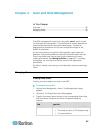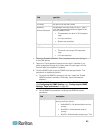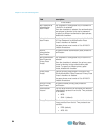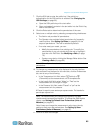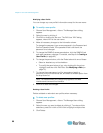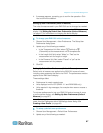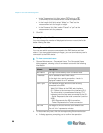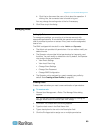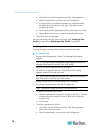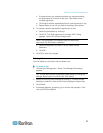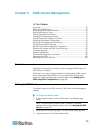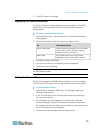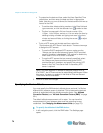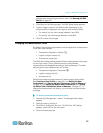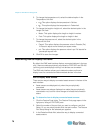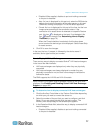
Chapter 4: User and Role Management
70
a. Click Add. The "Add Privileges to new Role" dialog appears.
b. Select the permission you want from the Privileges list.
c. If the permission you selected contains any argument setting,
the Arguments list is shown to the right. Then select one or
multiple arguments.
d. Click Add to add the selected permission (and arguments if any).
e. Repeat Steps a to d until you add all necessary permissions.
6. Click OK to save the changes.
Now you can assign the new role to any users. See Creating a User
Profile (on page 62) or Modifying a User Profile (on page 66).
Modifying a Role
You can change an existing role's settings except for the name.
To modify a role:
1. Choose User Management > Roles. The Manage Roles dialog
appears.
Tip: You can also access the Manage Roles dialog by clicking the
Manage Roles button in the Edit User 'XXX' dialog.
2. Select the role you want to modify by clicking it.
3. Click Edit or double-click the role. The Edit Role 'XXX' dialog
appears, where XXX is the role name.
Tip: You can also access the Edit Role 'XXX' dialog by clicking the
Edit Role button in the Edit User 'XXX' dialog.
4. Modify the text shown in the Description field if necessary.
5. To change the permissions, click the Privileges tab.
Note: You cannot change the Admin role's permissions.
6. To delete any permissions, do this:
a. Select the permission you want to remove by clicking it. To make
multiple selections, press Ctrl+click or Shift+click to highlight
multiple ones.
b. Click Delete.
7. To add any permissions, do this:
a. Click Add. The Add Privileges to Role 'XXX' dialog appears,
where XXX is the role name.
b. Select the permission you want from the Privileges list.



